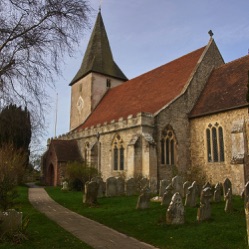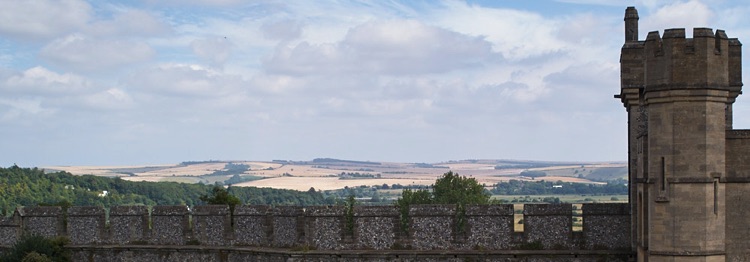
Highlights
Holy Trinity Church dates from Saxon times
Featured on Bayeux tapestry
Fine views of Chichester harbor
Fishbourne Roman Palace only 3 miles away
Visitor Information
Holy Trinity church open daily, except when services in progress
Pay and display parking in village
Public toilets at car park
Refreshments available in village
History
There is evidence of human activity at Bosham dating to Roman times. The site continued as an important Saxon site. In 670 an Irish monk, Dicul, set up a small monastery in Bosham (Bosanham) with 5 or 6 brothers. It may have been Dicul's preaching that led St Cuthman to Christianity. St Cuthman later traveled to Steyning where he founded the church of St Andrew. Hoever, St Cuthman appears to have been the exception and the majority of the local Saxon population paid little attention to Dicul's teachings. Christianity began to gain a stronger footing after the arrival of Bishop Wilfred.
The Holy Trinity church in Bosham, pictured above, dates from Saxon times. The first parts of the church were built in the early 11th Century, during the reign of King Cnut. It is believed that Cnut's eight year old daughter died here and is buried at the Church.
The manor passed down to Earl Godwine and then to Harold. It is believed Harold dined here and prayed at the church before his fateful voyage to Normandy. After the Battle of Hastings, William of Normandy took the church and manor at Bosham as a royal domain. In the Domesday Book of 1084, Bosham Church was one of the wealthiest churches in England, owning property of over thirteen thousand acres across the country.
While there is little evidence, local legend has it that a Saxon leader was buried here after the battle of Hastings, believed by some to be Harold himself. Although it must be remembered that three Godwine brothers perished at the battle of Hastings and if a Saxon lord is buried there, it could be any of the three.
Bosham
Gallery
Map
Website



